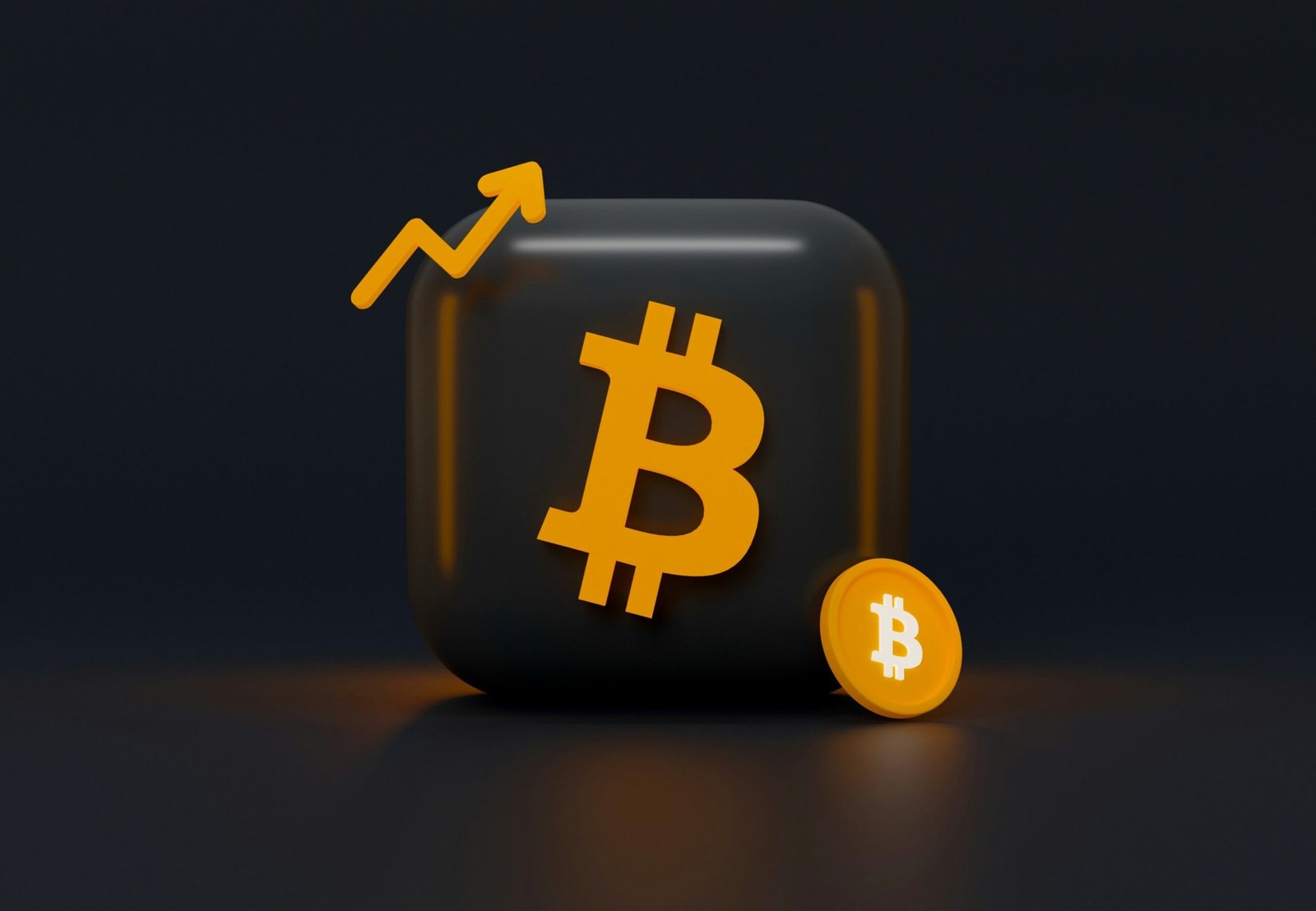Introduction to Digital Wallets
In the evolving landscape of financial technology, digital wallets have emerged as a pivotal tool for both consumers and businesses alike. A digital wallet, often referred to as an e-wallet, is essentially a software application that allows individuals to store, send, and receive digital currencies or traditional money securely online. This innovative technology is revolutionizing the way transactions are conducted, making the payment process both seamless and efficient.
The relevance of digital wallets in today’s society cannot be overstated. With the growing ubiquity of smartphones and internet connectivity, more consumers are gravitating towards cashless transactions. Digital wallets facilitate this transition by providing a secure and convenient platform for making purchases, transferring funds, and managing financial information. Services such as PayPal, Apple Pay, and Google Wallet have become household names, reflecting their widespread adoption and utility in everyday life.
Moreover, the operational dynamics of digital wallets play a significant role in enhancing user experience. Users can link their bank accounts, credit cards, or cryptocurrency balances to their digital wallets, allowing for instant transactions. This technological advancement not only provides efficiency but also ensures safety, as most digital wallets are equipped with robust security measures such as encryption and biometric authorization. As consumers become increasingly aware of the advantages of going digital, the implications for traditional payment methods are evident.
In essence, the integration of digital wallets into our daily transactions symbolizes a significant shift in how we manage our finances. As we delve deeper into the functionality and effectiveness of these wallets, it is essential to understand their potential impact on consumer behavior and the broader financial ecosystem.
The Evolution of Payment Methods
Payment methods have undergone a substantial transformation throughout history, evolving from barter systems to sophisticated digital wallets. In antiquity, individuals exchanged goods and services directly, which often posed challenges related to valuation and availability of items. As societies progressed, currencies emerged, facilitating trade. This marked the inception of a standardized medium of exchange, such as coins and later paper money, which simplified transactions while providing a reliable measure of value.
The Industrial Revolution catalyzed further advancements, introducing banking systems that enabled the issuance of checks and promissory notes as payment methods. These developments not only improved security but also increased convenience for merchants and consumers alike. By the mid-20th century, credit cards emerged, revolutionizing purchases by allowing consumers to buy goods on credit, thereby enhancing the purchasing power and creating a shift in consumer behavior towards a more credit-oriented society.
As technology advanced, electronic funds transfer systems and automated teller machines (ATMs) began to gain traction, leading to greater accessibility of financial resources. The rise of the internet in the late 20th century paved the way for online banking and e-commerce, greatly changing the landscape of how consumers conduct transactions. These advancements set the stage for the emergence of digital wallets, which integrate various online payment methods into a single platform, providing users with a convenient and secure way to make transactions.
Moreover, the proliferation of smartphones has accelerated the adoption of digital payment systems, facilitating the seamless integration of payment methods into daily life. Today, digital wallets allow users to store credit card information, loyalty programs, and transaction histories, thus streamlining the payments process. The convergence of technological innovation and shifting consumer preferences continues to drive the growth of digital wallets, positioning them as a key player in the future of financial transactions.
Understanding Digital Wallets: Functionality and Features
Digital wallets serve as a pivotal component of modern financial transactions, allowing users to store, manage, and utilize payment information electronically. These wallets are designed to store various forms of payment credentials, including credit and debit card details, loyalty cards, and even cryptocurrencies. As such, they provide a streamlined approach to managing multiple financial instruments within a single platform.
One of the core functionalities of digital wallets is their ability to facilitate secure transactions. Digital wallets employ advanced encryption technologies to protect sensitive financial information. This attention to security significantly reduces the risk of fraud and unauthorized access. Features such as biometric authentication—like fingerprint recognition or facial scans—are common, adding an additional layer of security that traditional wallets cannot provide.
Usability is another central aspect of digital wallets. Popular examples, such as Apple Pay, Google Pay, and PayPal, highlight the convenience offered by these platforms. Users can make payments with a simple tap of their smartphone or through online purchases, eliminating the need for physical cash or cards. The integration with various merchant platforms simplifies the purchasing process, as apps often save user preferences, enabling quick checkouts.
Additionally, many digital wallets feature the ability to manage rewards and loyalty points. For instance, a user may accumulate points from a specific store’s loyalty program directly in their digital wallet, which can be redeemed seamlessly during future purchases. This functionality enhances the overall user experience by combining financial management with rewards. Overall, digital wallets exemplify a significant evolution in financial technology, making daily transactions notably more efficient and secure.
The Science Behind Digital Wallet Technology
Digital wallets, often referred to as e-wallets, have revolutionized the way we conduct transactions in the modern economy. At the core of this technology lies a complex amalgamation of scientific principles aimed at ensuring security and efficiency. One of the fundamental components of digital wallet technology is encryption, which protects sensitive data such as payment information and personal details. By converting information into a code, encryption ensures that only authorized parties can access it, thereby providing a secure environment for financial transactions.
Another pivotal aspect of digital wallet technology is blockchain. This decentralized ledger system records digital transactions in a manner that is incorruptible and transparent. Each transaction is grouped into blocks, which are then linked together in chronological order, creating an immutable chain of data. The use of blockchain enhances the reliability of digital wallets, as any attempt to alter a block would require reconfiguration of all subsequent blocks, which is practically impossible. This characteristic not only secures transactions, it also instills confidence among users.
Moreover, secure server architecture plays a critical role in the functionality of digital wallets. By utilizing advanced security protocols such as Secure Socket Layer (SSL) and Transport Layer Security (TLS), digital wallets ensure that data is transferred safely over the internet. These protocols act as a protective barrier against potential cyber threats, which is essential in a landscape where data breaches are becoming increasingly common. As digital wallets continue to evolve, the integration of artificial intelligence and machine learning technologies further refines fraud detection capabilities, making transactions more secure and efficient.
Overall, the science that underpins digital wallet technology is a delicate balance of encryption, blockchain, and secure server architecture. Together, these elements work in synergy to enhance the security of users’ financial information while facilitating seamless transactions in an increasingly digitalized world.
Philosophical Implications of Digital Wallets
The advent of digital wallets has transformed the way individuals manage their finances, ultimately prompting a deep philosophical inquiry into the nature of money, identity, and trust in an increasingly digital world. As users transition from physical to digital means of transacting, they confront complex questions regarding the essence of personal identity and the implications of relying on technology for financial management.
At the core of this transformation lies the concept of trust. Traditional financial systems operate on established institutions that individuals rely on to validate transactions and safeguard assets. Digital wallets, however, challenge these norms by decentralizing trust. This raises significant questions about the reliability of technology versus human intermediaries. In a world where financial transactions occur behind screens and algorithms, users may find themselves reconsidering what it means to trust a process rather than a person. The digital wallet thus becomes a reflection of societal shifts towards efficiency, often at the cost of personal connection and accountability.
Additionally, the use of digital wallets poses intriguing dilemmas regarding privacy. As transactions become more streamlined and convenient, users often relinquish a degree of personal information to technology companies. This data, in turn, can be analyzed, commodified, and used in ways that raise ethical concerns. Users must navigate the balance between convenience and the potential erosion of privacy, questioning how much they are willing to share in exchange for access to financial tools.
Moreover, the digitalization of money prompts a re-evaluation of what constitutes value and currency. In the digital age, cryptocurrencies and digital currencies redefine traditional understanding, blurring the boundaries between money and the intangible. This evolution forces society to contemplate the philosophical underpinnings of economic exchange, emphasizing the need to critically assess the implications of relying on digital mechanisms to define financial value. As we increasingly embrace digital wallets, these philosophical queries become essential to understanding the broader impact of this technology on our lives.
Digital Wallets in Everyday Life: Real-World Applications
Digital wallets have revolutionized the way individuals and businesses transact, offering convenience, speed, and security in daily financial activities. Across various demographics and locations, these digital solutions are now integral to modern commerce. In the realm of everyday shopping, many consumers are opting for digital wallet applications, such as Apple Pay, Google Wallet, and PayPal, to make contactless payments at retail stores. This trend has been driven by a desire for a seamless shopping experience, particularly in the wake of the COVID-19 pandemic, which emphasized hygiene and distancing. A case in point is the widespread adoption of digital wallets among millennials, who appreciate the integration of loyalty programs and promotions directly into their payment applications, thus enhancing customer engagement.
Furthermore, digital wallets have found significant utility in online shopping, enabling swift transactions that bypass the need to enter credit card details for each purchase. This ease of transaction has empowered millions, particularly in e-commerce sectors, where platforms like Amazon and Etsy facilitate payment through digital wallets. As consumers grow accustomed to this method of payment, the shift is evident in both frequency and volume of transactions processed through these platforms.
Beyond retail and e-commerce, digital wallets also play a crucial role in international remittances. For instance, platforms like Venmo and Cash App allow users to send money domestically, while other services like TransferWise or WorldRemit cater to cross-border transactions. These digital solutions significantly reduce transaction costs and enhance the speed at which funds are transferred. For many migrant workers supporting families abroad, digital wallets provide a reliable and efficient means of remitting funds, highlighting their relevance in catering to diverse financial needs.
Challenges and Concerns Surrounding Digital Wallets
The rise of digital wallets has transformed how individuals manage their finances, yet it comes with a set of challenges that cannot be overlooked. One of the primary concerns is cybersecurity. As financial transactions increasingly shift to digital platforms, the risk of cyberattacks grows correspondingly. Hackers target digital wallets to access sensitive information, leading to potential identity theft and financial loss. Ensuring robust security measures, such as two-factor authentication and encryption, is essential, but even these protections can be circumvented by determined attackers.
Another challenge relates to technological barriers that some users encounter when adopting digital wallets. Not all individuals possess the necessary skills or access to the smartphones and internet connections required to utilize these financial tools effectively. This creates a significant divide, as those lacking technological literacy may find themselves excluded from the benefits of digital transactions. Additionally, older generations may prefer traditional banking methods, further complicating the integration of digital wallets into everyday life.
The issue of the digital divide also extends to socioeconomic factors. Those in lower-income brackets may lack access to smartphones or reliable internet, thereby widening the gap between different socioeconomic groups regarding the use of digital payment systems. This inequity raises concerns about financial inclusion, as those without access to digital wallets may be left out of the modern economy.
Moreover, there are regulatory challenges in overseeing the vast ecosystem of digital wallets. The rapidly evolving technology often outpaces existing financial regulations, leading to uncertainty and potential exploitations in the market. Addressing these challenges will be critical to fostering a secure and inclusive financial landscape that benefits all users in the digital age.
The Future of Digital Wallets: Trends and Predictions
As we delve into the future of digital wallets, several trends emerge that suggest significant advancements in this technology. Digital wallets are poised to become integral parts of everyday financial transactions, evolving to meet the demands of a rapidly digitizing economy. One major trend is the anticipated rise of biometric authentication features, such as fingerprint scanning and facial recognition, which will enhance security and user convenience. As concerns over cybersecurity heighten, these innovations are expected to become mainstream, fostering consumer confidence in digital wallet transactions.
Another critical aspect influencing the future of digital wallets is the potential for regulatory changes. Governments around the world are beginning to recognize the need for comprehensive frameworks to govern digital transactions. These regulations may address issues such as consumer protection, data privacy, and anti-money laundering measures. As new regulations emerge, they will shape the landscape for digital wallets, ensuring that they operate within a secure and compliant environment. The collaboration between financial institutions and regulatory bodies will play a crucial role, driving innovation while safeguarding consumers’ interests.
Additionally, shifting consumer preferences towards contactless payment solutions will propel the evolution of digital wallet technology. The COVID-19 pandemic has accelerated the adoption of contactless payments, pushing many to seek alternate methods of transactions that minimize physical contact. This trend indicates that consumers are increasingly favoring speed and convenience, which digital wallets provide effectively. Future developments may include the integration of loyalty programs and personalized offers, further enticing users to adopt and rely on digital wallets for their financial needs.
In summary, the trajectory of digital wallets is set for an exciting transformation, driven by technological advancements, regulatory developments, and evolving consumer habits. As these factors converge, we can expect digital wallets to become more secure, user-friendly, and central to our transaction experiences in the coming years.
Conclusion: Reflecting on the Journey of Digital Wallets
The evolution of digital wallets represents a significant milestone in both technological advancement and consumer behavior. As we have explored throughout this blog post, digital wallets have seamlessly integrated into our daily lives, shifting how we perceive and perform financial transactions. From convenience to enhanced security features, the lessons learned underscore the multifaceted nature of digital wallets and their implications in contemporary society.
Moreover, the integration of digital wallets with various platforms, including e-commerce, social media, and banking services, highlights their versatility and essential role in facilitating smoother transactions. This shift not only reflects technological progress but also raises important philosophical questions regarding trust, security, and the future of currency itself. Are we moving towards a society that prioritizes efficiency over traditional methods, or is there a need for balance between innovation and caution?
Furthermore, as digital wallets become increasingly prevalent, we must ponder their impact on financial literacy. They provide users with tools that can enhance budgeting and expense tracking, yet they also risk overshadowing the fundamental principles of money management. How do we ensure that users remain informed and responsible in an increasingly digital landscape? These questions invite readers to engage with the concept of digital wallets actively, fostering a dialogue about their personal experiences and perspectives.
In reflecting on the journey of digital wallets, we uncover not just a technological tool, but a transformative shift in financial interactions. The emphasis on understanding these wallets extends beyond their basic functionality, encouraging users to consider their role in shaping the future of money. As we move forward, the conversation regarding digital wallets will likely expand, inviting new insights and innovations that redefine our approach to finance.






